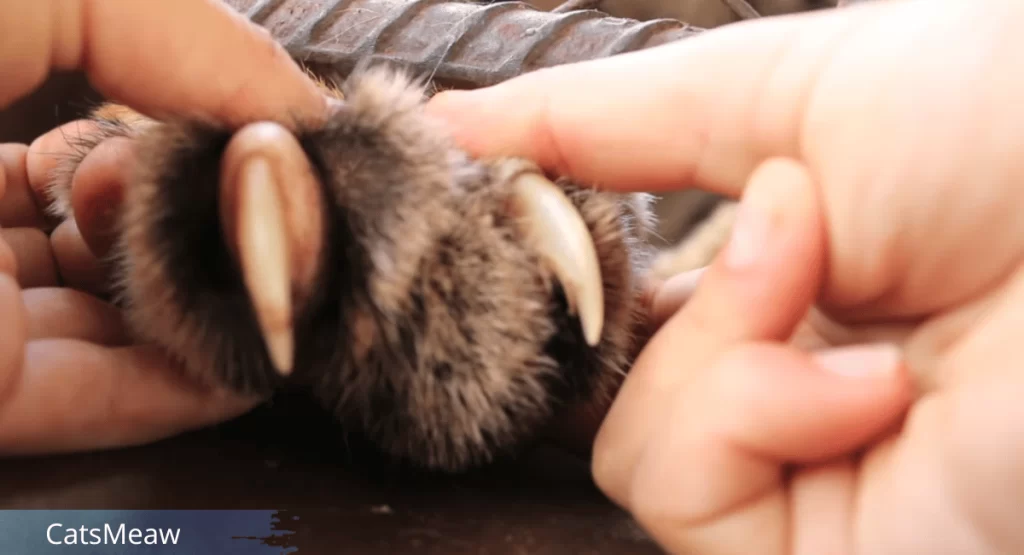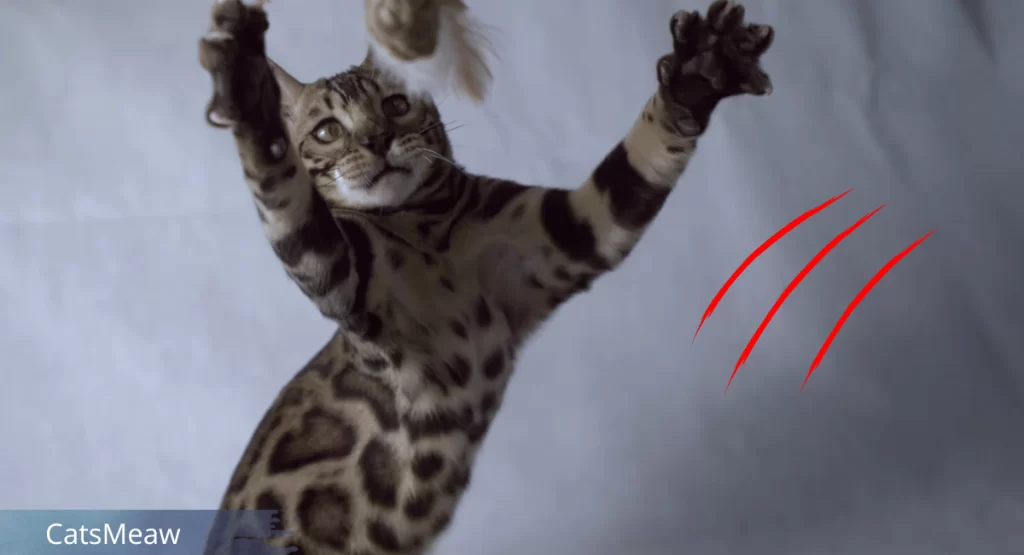Cats are fascinating creatures, revered for their agility, grace, and the enigmatic aura they carry. Among their several intriguing features, their claws hold a special place, being central to their survival, well-being, and the intricate grooming rituals they so religiously follow. However, just as with any other aspect of their health, cat claws can become a source of concern when they get infected.

In this comprehensive guide, we will delve deep into understanding infected cat claws, their causes, symptoms, treatments, and how we can prevent such infections. Additionally, we’ll explore the health benefits of cat claws and the role of samento in promoting cat claw health.
Table of Contents
Introduction to Cat Claws and Their Importance
Cat claws are not just weapons for defense or tools for hunting; they are multifaceted instruments that serve various purposes in a cat’s life. Primarily, they are essential for climbing, providing cats with the remarkable ability to ascend trees or fences with ease.
This capability is not just for escape or hunting; it also offers cats a sense of security, allowing them to reach vantage points where they can observe their surroundings undisturbed. Furthermore, claws are integral to a cat’s grooming process. They help in removing dirt and debris from their fur and are used during the ‘scratching’ process to mark territory. This scratching action also aids in removing the dead outer layer of their claws, promoting healthy growth.
Understanding Infected Cat Claws
An infected cat claw, often unnoticed until symptoms become visible or the cat shows discomfort, is a condition that can lead to significant health issues if left untreated. The infection occurs when bacteria or fungi penetrate the protective barrier of the claw or claw bed, typically through a wound or opening. This can happen during normal activities such as scratching, climbing, or even through minor cuts obtained during their adventurous escapades.
Common Causes of Infected Cat Claws
The onset of an infected cat claw can be attributed to various factors. One common cause is an injury, where the claw gets torn or split, creating an entry point for bacteria or fungi. Outdoor cats are particularly susceptible to such injuries due to their exploratory nature.
Related: Best Guide to Trimming Your Cat’s Nails
Another cause is improper claw care, including lack of regular trimming, which can lead to overgrown claws curling into the paw pads, resulting in wounds. Additionally, underlying health conditions, such as a weakened immune system, can make cats more vulnerable to infections.
Symptoms of Infected Cat Claws
Recognizing the symptoms of an infected cat claw is crucial for timely intervention. Early signs include swelling around the claw, redness, and the cat exhibiting pain when the area is touched. As the infection progresses, you may notice pus or a foul smell emanating from the affected claw. The cat might also start limping or show reluctance to use the affected paw, indicating discomfort or pain. Behavioral changes such as increased licking or biting at the claw, reduced activity levels, or aggression when the area is touched are also common indicators.
How to Treat Infected Cat Claws at Home
Initial treatment for an infected cat claw can often be managed at home, provided the infection is not severe. The first step is to gently clean the affected area with a mild antiseptic solution to remove any debris and bacteria. Applying a warm compress can help in reducing swelling and pain. It’s important to ensure the cat does not lick or bite the infected claw, which might necessitate the use of a protective collar. Additionally, keeping the claw trimmed and the surrounding fur clean can prevent further aggravation of the infection.

When to Seek Professional Help for Infected Cat Claws
While mild infections can be treated at home, certain situations necessitate professional veterinary care. If you notice no improvement in the condition after a few days of home treatment, or if the infection seems to worsen, it’s crucial to consult a veterinarian. Signs such as spreading of the infection, significant swelling, limping, or if the cat is in considerable pain, are clear indicators that professional help is needed. A veterinarian can offer treatments such as antibiotics, antifungal medications, or even surgery in severe cases.
Preventing Infected Cat Claws
Prevention is always better than cure, and this holds true for preventing infected cat claws as well. Regular claw care, including trimming and inspections, can significantly reduce the risk of infections. Ensuring that your cat has a clean and safe environment to explore, with limited exposure to potential hazards, can also help. Additionally, providing scratching posts can fulfill their natural scratching instincts in a safe manner, aiding in the healthy maintenance of their claws.
The Health Benefits of Cat Claws for Cats
Beyond their immediate functional benefits, cat claws also contribute to a cat’s overall health and well-being. The act of scratching, besides being a territory-marking behavior and aiding in claw maintenance, is a form of exercise. It stretches and strengthens their muscles, contributing to their physical health.
Related: The Cat Grooming Guide: Best Tips and Advice
Furthermore, the ability to climb and explore their environment enriches their mental and emotional well-being, ensuring they lead a balanced and happy life.
The Benefits of Samento for Cat Claw Health
Samento, a natural extract derived from the Cat’s Claw plant, has been recognized for its health benefits, including its positive effects on cat claw health. It possesses anti-inflammatory and immune-boosting properties, making it beneficial in preventing and treating infections. Incorporating samento into your cat’s care regimen can thus support the maintenance of healthy claws, alongside its other health benefits.
Taking Care of Your Cat’s Claws for Their Overall Well-Being
In conclusion, taking care of your cat’s claws is not just about preventing infections; it’s a vital aspect of ensuring their overall health and happiness. Regular inspections, proper grooming, and being attuned to the signs of potential problems can go a long way in maintaining healthy claws. Should you notice any issues, early intervention is key, whether through home remedies or professional veterinary care. Remember, a little attention and care can ensure that your feline friend continues to climb, explore, and thrive in their world with ease and comfort.
